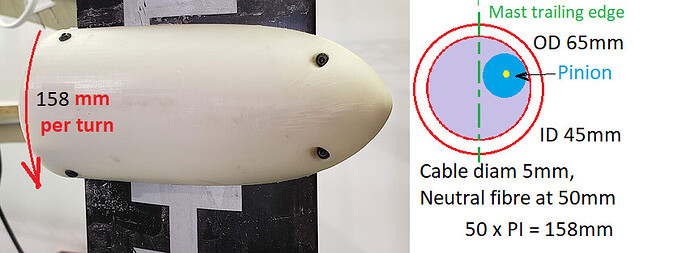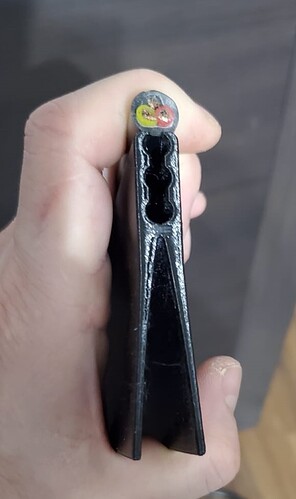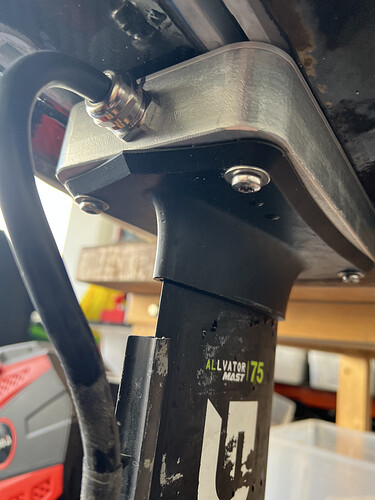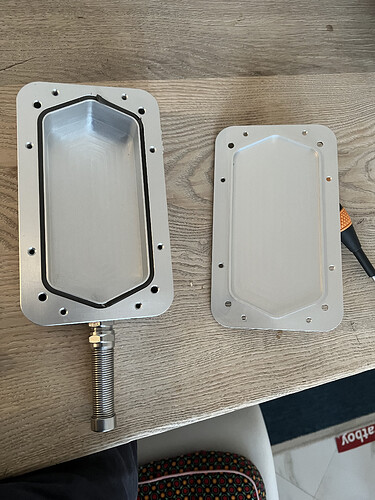May as well run a channel that’s used to lift the motor up and down with the wires inside it. You’d need 3 rollers and need to replace the rollers when they wear down. Then if sand gets onto the rollers they’ll struggle to run smoothly. Endless maintenance fun…
Fliteboard did make that choice for their True Glide Prop running 50 to 95% of the water time and immersed 100% of the time… A motor pod roller with adjustable height would be used a couple of minutes per session. If not in efoil use, the immersed time woud be quite low.
Instead of using a roller against the mast, a translation guide could be made out of a low friction material like Nylon though.
The truglide prop is nothing like you suggesting. They have sealed bearings so that sand cant get anywhere near them. The truglide prop is super low maintenance.
Also by simply placing a foildrive 30cm below the board and 60cm above the foil you are able to both efoil and freeride, completely eliminating the need to move it around by hand…
In the world of watersports, simplicity always wins. No one really wants complications and long setup times.
Are they available on the market ? Any equivalent ?
Rolling the cable around the motor pod would be a low maintenance solution. One cable turn (OD 5mm) around a 45mm section represents a cable length of 160mm. A 3D printed TPU friction roller (blue on the diagram here below) fixed between the mast trailing edge and the reel transforms a longitudinal movement into a rotational one to wind/unwind the cable that is increase or decrease the motor cable length along the mast.
A single turn allows the pod to range between 100mm and 100+160 = 260 mm below the board bottom which is roughly what is described in the @jetsurfingnation video.
I think using a single sheathed 3 core cable doesn’t make sense in a foil drive. Comparison of 12 AWG 3-core cable and 10 AWG cable holder
Love the crazy ideas. Here’s one to add to the mix.
You could use water pressure from a hole on the front of the mast to force a magnetic puck upwards inside an aluminium mast, pulling the motor pod upwards.
The cable could be coiled at the back like you suggested.
What truly blows my mind is how the foildrive users spend 3k on a unit and then don’t just get an extra mast for $100 so they can run the cable internally!
The people who spend 3k on a foil drive unit aren’t the same people that will diy install a cable inside a mast.
Hahaha very true! But they could pay someone to very easily do it…
Perhaps the people spending $3,000 are the people who just like the combination of a cheap Chinese motor and a few 3D printed parts?
I just looked at Foildrive AU site and the price listed for Assist Plus + Cedrus (mast) is $6,000 AUD. The Assist Plus is $4,600 AUD so $1,400 AUD for the mast add on.
nice design… will do the same but the drag for take off is not a huge issue and when you are flying (above the pod) you have no more drag which is the most important `!
I will test soon an enclosure to put the vesc right on top of the mast for cooling reason …since I run on 12S my 6384 …im flying above water so fast … indeed will bring even more drag
I used a similar solution for my regular F-one rocket board. Unfortunately, the resistance was too big.
Do you mean that the drag was so high it prevented the board from taking-off ? ?
It is possible to add a plied alu or plastic sheet 45° ‘visor’ or “deflector” in front of the enclosure inserted between it and the board to facilitate the take-off.
I could hardly take off against the wind and could not take off with the wind. Thanks, I’ll think about the visor.
I have been following this thread and others like it and haven’t been able to find any definitive guidance/data to determine the “best” position for the drive unit below the bottom of board. Perhaps “best” is really an individual rider/board thing.
I would like to shorten my learning curve by asking the collective experience of the group.
Of course there are many variables involved in defining “best” position but it would be helpful to people like me to have a starting point rather than go through all the trial and error / frustration that many have gone through.
To help with definition let’s say that the centre of the prop/jet is bottom and top is where the mastplate attaches to the board. The “best” position is the distance between those two points that lets a new rider with the majority of their weight on top of the board to transition smoothly from idle floating to the point where the foil starts to take effect.
My assumption is if the position is too high it risks either cavitation or just powering forward for too long and too deep would force a too aggressive angle of attack of the foil. “Best” would be a good compromise of those two extremes.
Opinions or pushback welcome 
Really depends what you’re doing with it. If I’m efoiling, as low as possible. If I’m surfing then as high as possible to only get ground speed while on the water still.




